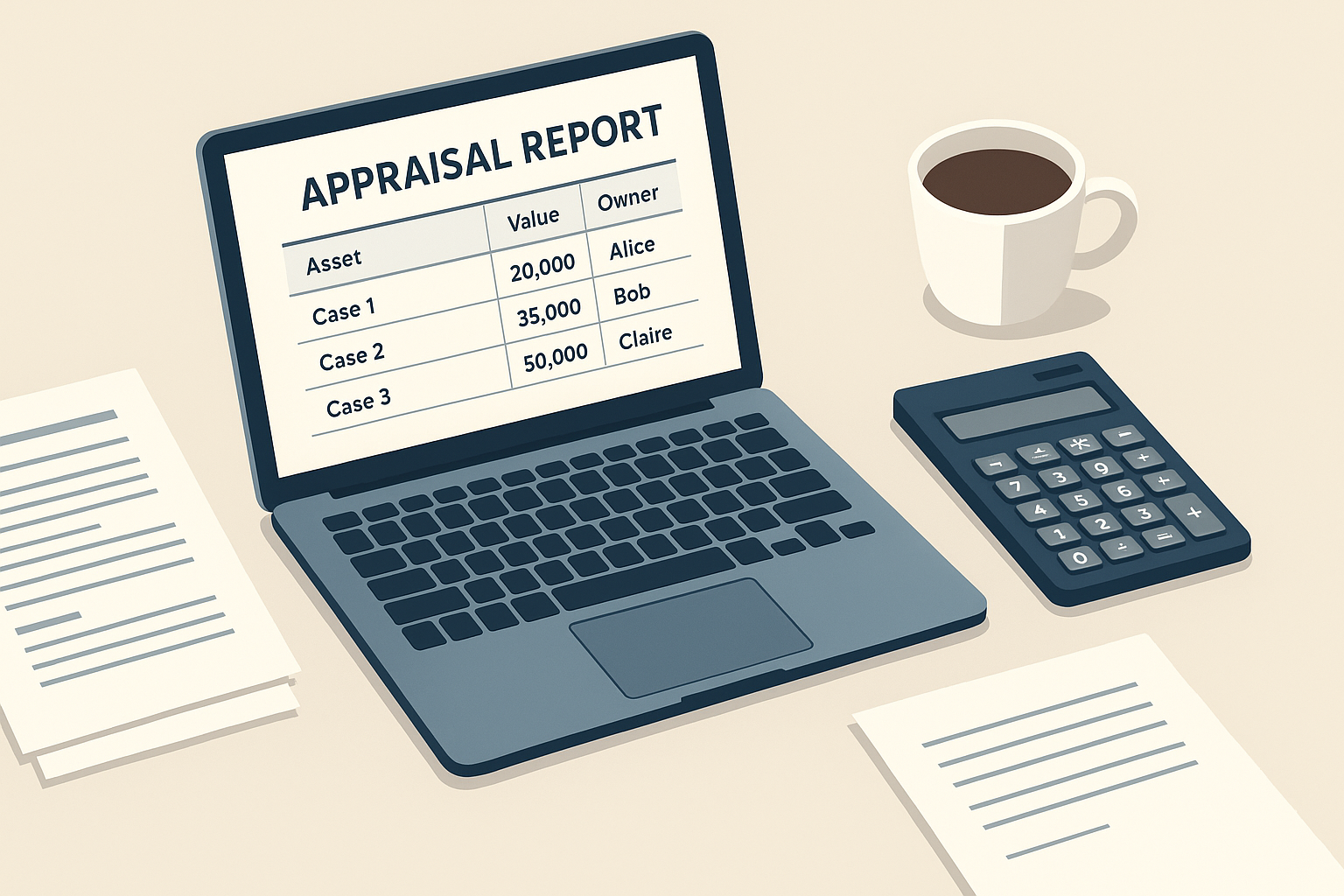






When life changes, either through divorce, inheritance, or business restructuring, dividing your assets can be one of the most sensitive and complex challenges you’ll face. You absolutely want to ensure that every step is both fair and legally defensible. That’s when understanding how to create a fair and equitable property division list becomes essential.
Whether you’re managing asset division during separation, working through equitable distribution, or handling property among heirs, clarity and documentation are your greatest safeguards against future disputes.
A property division list is your complete record of everything that needs to be divided: homes, vehicles, bank accounts, family estates, business interests, furniture, and even artwork. It serves as both a financial inventory and a roadmap for ensuring that everyone involved receives their fair share.
However, fairness in this context, known legally as equitable distribution, doesn’t always mean a 50/50 split. Instead, it means dividing assets based on what’s fair, considering factors like contributions, financial need, caregiving responsibilities, and future stability.
Fair ≠ Equal Equitable distribution is about fairness based on contribution. It accounts for income, effort, and future needs to create a balanced outcome.
Imagine Jordan and Taylor are separating. Jordan built a strong career while Taylor took time off to manage their kids and household, ultimately allowing for his success. In an equitable division, Taylor could receive a larger share of some assets — say, 60% of the home’s value — to reflect years of unpaid contributions and future financial security. The same idea applies to partners or heirs.

When dividing property, whether during a divorce, separation, or inheritance, the goal is always similar: achieving fairness through clarity, documentation, and accurate valuation.
Across the United States, property division follows different patterns depending on state law. A 50/50 split is most common only in community property states. However, in equitable distribution states courts often approve 60/40 splits to reflect differences in contributions. Although rarer, you could also see greater splits, particularly when a party played a major role in maintaining family assets over time.
ACHIEVING FAIRNESS: A 50/50 division looks equal on paper, but true fairness takes into account both tangible and intangible contributions.
Most equitable outcomes represent the same underlying principle: equity, not equality, and to achieve this, the true measure of fairness lies in verified valuation and transparency. The same principle applies when dividing land among heirs. Inheritance often involves strong emotions and unique logistical challenges, since land cannot be physically divided without affecting its worth.
For example, siblings inheriting a family farm might discover that one section with access to water or a paved road is worth more than the rest. Adjusting boundary lines or using monetary offsets ensures that everyone receives an equivalent share in value, protecting both fairness and family relationships.
The most reliable first step is obtaining an independent property appraisal. Once the property’s fair market value is established, heirs can proceed in one of three ways: sell the land and divide the proceeds, arrange a buyout where one heir compensates the others, or divide the land under permissible zoning laws into parcels of equal value rather than equal size.
FAMILY TIP: Equal acreage isn’t always equal value. A certified appraisal ensures fairness by grounding decisions in objective numbers.

The most effective approach to fair property division is systematic. You start by listing all assets, determining who owns what, obtaining professional appraisals, and then distributing those assets in a way that’s fair and legally defensible. Here’s how to build one effectively and use it as a working document for settlements or estate planning.
1. Take Full Inventory
List all assets—real estate, vehicles, equipment, accounts, investments, and even sentimental items. The more complete your list, the fewer surprises later.
2. Classify Ownership
Determine which items are separate (owned before marriage or individually gifted) and which are shared (acquired jointly or through marital funds).
3. Appraise Everything Professionally
For fair results, have major assets professionally appraised to determine their fair market value. Smaller items can use recent sale comparisons or purchase records.
4. Assign and Compare Values
Record each item’s appraised value and tally totals to see the overall picture. This allows you to make adjustments for fairness.
5. Balance the Division
Fairness doesn’t always mean equal halves. One party may keep more property while another receives offsetting assets or financial compensation.
Following these steps transforms the grueling task into a transparent, organized process that stands up to scrutiny in court or mediation.
Q. What is the first step in creating a fair property division list?
A. Start with a comprehensive inventory. List every asset—real estate, vehicles, jewelry, financial accounts, and business interests. You can’t divide what you haven’t identified. Once your list is complete, classification and appraisal follow naturally.
Q. How do appraisals help with equitable distribution during divorce or inheritance?
A. Appraisals provide objective, defensible values that both parties can rely on. During a divorce or when dividing land among heirs, professional valuations remove emotion from the process and ensure each person’s share reflects fair market value.
Q. What happens if we can’t agree on asset division?
A. When negotiations fail, courts or mediators step in to apply equitable distribution principles. Having a professional property valuation already in place often helps prevent disputes and can speed up settlement by grounding discussions in facts instead of opinions.
Q. Can a property division list include businesses or professional assets?
A. Absolutely. Business valuations are a critical part of asset division especially during divorce or partnership separation. Certified appraisers can assess the fair market value of a business, including tangible assets and goodwill, ensuring it’s represented fairly in your division.
Whether you’re dividing marital property, distributing assets among heirs, or finalizing an asset division during separation, a fair property division list is only as reliable as the valuations behind it. Certified appraisals provide the credibility that courts, insurers, and tax authorities recognize. They eliminate bias, clarify complex ownership situations, and establish the factual foundation for fair decision-making.
That’s where we come in. We specialize in fast, certified appraisals that are Uniform Standards of Professional Appraisal Practice (USPAP) compliant for real estate, equipment, businesses, and personal property. With AppraiseItNow, you gain objective proof that your division is equitable, defensible, and built on accuracy. Contact us today




